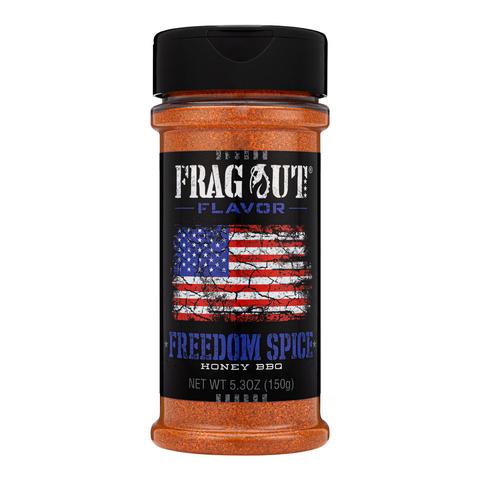
“Discover the Ultimate Fish-Frying Perfection with the Best Oil! Unveiling the perfect blend for crispy, golden fish fillets. Enhance your culinary skills and achieve unrivaled flavor and texture with our top-rated oil. Get ready to elevate your frying game to new heights!”
What Is the Best Oil for Frying Fish?
When it comes to frying fish, choosing the right oil is essential. The oil you use can affect the texture, taste, and overall frying process of the fish. One important factor to consider is the smoke point of the oil. A high smoke point is necessary to sustain the high heat needed for frying fish properly. Oils with a low smoke point can break down and release undesirable substances that give burnt foods their acrid flavor and aroma.

The temperature needed for frying fish is between 350 and 375 degrees F, so it’s crucial to choose an oil that can withstand this heat. Additionally, you should choose an oil with a neutral flavor to avoid overpowering the delicate taste of the fish. Oils such as canola, vegetable, safflower, and peanut oil are all good options due to their high smoke points and neutral or slightly nutty flavors.
While some oils may be healthier than others due to their fatty acid composition, it’s important to note that once an oil reaches its smoke point, it begins to release free radicals that can be harmful to cells in the body. Canola, sunflower, avocado, and peanut oil are all considered healthy options for frying at high temperatures.
Among these choices, canola oil is often recommended as a go-to option for frying fish. It has a high smoke point and neutral flavor while being readily available in stores. Refined safflower oil also works well due to its high smoke point and content of monounsaturated fats. Sunflower oil with a high oleic variety is another popular choice because of its neutral flavor profile. Peanut oil can be used if you enjoy its slightly nutty-sweet flavor but should be consumed in moderation due to its higher fat content.
If you prefer using olive oil for frying fish, it’s perfectly healthy to do so. However, olive oil has a lower smoke point and may be harder to maintain at the proper frying temperature. It will also impart a slight olive flavor to the fish, which can be a positive or negative depending on personal preference.
In conclusion, the best oil for frying fish is one with a high smoke point and neutral flavor that won’t overpower the taste of the fish. Options like canola, safflower, sunflower, and peanut oil are all suitable choices. Olive oil can also be used but may require more attention to maintain the proper frying temperature.
How to Choose the Best Oil for Frying Your Fish
When it comes to frying fish, selecting the right oil is crucial for achieving a crispy and light texture without excess grease. The first factor to consider is the oil’s smoke point, as this determines how hot you can heat it before it begins to smoke. Opt for an oil with a high smoke point, such as canola, sunflower, or safflower oil, which can sustain the necessary high heat for frying fish effectively.
Additionally, choose an oil with a neutral flavor to avoid overpowering the delicate taste of the fish. Oils like canola, vegetable, and safflower have little to no flavor that would interfere with the fish’s natural taste. Peanut oil is another option that imparts a slight nutty flavor but still works well for frying.
Considering health factors is also important when selecting frying oil. Oils containing saturated and monounsaturated fats are more stable at high temperatures and release fewer free radicals when heated. Canola, sunflower, avocado, and refined safflower oils are all healthier choices for frying fish compared to polyunsaturated oils.

Smoke Point
The smoke point of oil is crucial when frying fish. It determines how hot the oil can get before it starts to smoke. To achieve crispy and light fish, it’s essential to choose an oil with a high smoke point that can sustain the high heat needed for frying. Oils that are heated past their smoke point can break down, releasing substances that give burnt foods an acrid flavor and aroma.
The proper frying temperature for fish is between 350 and 375 degrees F. It’s important to choose an oil that can be heated to at least 50 degrees above the desired frying temperature. This compensates for the drop in temperature when cold food is added to the pan. If the temperature is too low, the fish will absorb excessive oil, while too high of a temperature will cause burning.
Fish has a delicate flavor, so it’s crucial to select an oil with a neutral taste that won’t overpower or interfere with the taste of the fish. Oils like extra virgin olive oil should be avoided due to their low smoke point and strong flavor. Canola, vegetable, safflower, and peanut oils are good options with little to no flavor interference.
Consider the health factors when choosing frying oil. Once oil reaches its smoke point, it releases free radicals that can damage cells in the body. Saturated and monounsaturated fats are more stable oils for cooking compared to polyunsaturated oils which break down more easily when heated. Canola, sunflower, avocado, and refined safflower oils are healthier options for frying fish.
The best choices of oil for frying fish include canola oil, refined safflower oil, sunflower oil, and peanut oil. These oils have high smoke points, neutral flavors, and are readily available in most stores. Olive oil can also be used for frying fish, although it has a lower smoke point and may impart a slight olive flavor to the fish. However, olive oil is still considered healthy due to its anti-inflammatory properties and high levels of antioxidants and fatty acids.
Flavor
When it comes to frying fish, it’s important to choose an oil with a neutral flavor. Fish has a delicate taste, so you don’t want the oil to overpower or interfere with its flavor. Oils like extra virgin olive oil and clarified butter (ghee) may have strong flavors that can mask the taste of the fish. Instead, opt for oils with little to no flavor, such as canola, vegetable, safflower, or peanut oil.
Canola oil is a popular choice for frying fish because it is light, readily available, and has a high smoke point. It can withstand high heat without breaking down and imparting a burnt taste to the fish. Refined safflower oil is another suitable option due to its high smoke point and neutral flavor. It also contains healthy monounsaturated fats.
Sunflower oil is commonly used for frying fish as well. It has a neutral flavor with a slight nutty undertone that doesn’t interfere with the taste of the fish. Just make sure to choose high oleic sunflower oil with a smoke point of 440°F rather than lower smoke point variants.
Peanut oil is another good choice for frying fish if you don’t mind its nutty-sweet flavor. It has a high smoke point but contains some fats that can break down into harmful free radicals when heated. While not the healthiest option, consuming peanut oil occasionally should not pose significant health risks.
Lastly, olive oil can be used for frying fish as long as you’re aware of its lower smoke point and slight olive flavor. While it may not be ideal for deep frying at very high temperatures, olive oil still offers health benefits due to its anti-inflammatory properties and abundance of antioxidants and fatty acids.
In conclusion, choosing an oil with a high smoke point and neutral flavor is crucial when frying fish. Canola oil, sunflower oil, peanut oil, and safflower oil are all excellent options to achieve crispy and flavorful fried fish. If you prefer to use olive oil, it is perfectly healthy, but keep in mind its lower smoke point and mild olive flavor.
Health Factors
When it comes to health factors, it’s important to consider the type of oil you’re using for frying fish. Once an oil reaches its smoke point, it starts to release free radicals that can potentially damage cells in the body. Oils high in saturated and monounsaturated fats are generally more stable when heated and are therefore better options for frying. Canola, sunflower, and avocado oil are all healthy choices as they fall under this category.
Polyunsaturated oils, on the other hand, contain short-chain fatty acids that break apart more easily when heated, releasing more free radicals. While peanut oil is a popular choice for frying fish due to its high smoke point, it contains both polyunsaturated and monounsaturated fats. This means that while it can be used occasionally without causing harm to your health, it may not be the healthiest option overall.
It’s also worth noting that olive oil can be used for frying fish, but its lower smoke point makes it harder to maintain the proper temperature. However, olive oil has anti-inflammatory properties and is high in antioxidants and fatty acids that help prevent it from breaking down into harmful free radicals. So if you choose to fry fish in olive oil occasionally, you don’t have to worry about negative impacts on your health.
In conclusion, choosing an oil with a high smoke point and neutral flavor is key when frying fish. Canola oil, sunflower oil, peanut oil (in moderation), and safflower oil are all suitable options. Olive oil can also be used but may impart a slight olive flavor on the fish. Ultimately, selecting a fish frying oil depends on your personal preferences and dietary requirements.
Best Oils for Frying Fish
When it comes to frying fish, canola oil can be your best go-to option. It is a very light oil that isn’t too expensive and readily available in all stores. Canola oil has a high smoke point and neutral flavor, making it ideal for frying fish without overpowering its delicate taste.
Refined safflower oil is another great choice for frying fish. It has a high smoke point and neutral flavor, ensuring that the oil doesn’t interfere with the taste of the fish. Additionally, safflower oil contains high levels of monounsaturated fats, making it a healthy option.
Sunflower oil is also commonly used for frying fish due to its neutral flavor, which doesn’t overpower the taste of the fish. High oleic sunflower oil, with a smoke point of 440°F, is particularly suitable for frying. However, sunflower oils with lower smoke points should be avoided.
Peanut oil is an option worth considering if you don’t mind a slightly nutty-sweet flavor in your fried fish. It has a high smoke point but contains some fats that can break down into free radicals when heated at high temperatures. While not the healthiest option, consuming peanut oil occasionally will not harm your health.
If you plan to fry fish in olive oil, it’s perfectly healthy to do so. Although olive oil has a lower smoke point and imparts a slight olive flavor to the fish, it’s rich in antioxidants and fatty acids that prevent it from breaking down into harmful free radicals.
Canola Oil
Canola oil is a popular choice for frying fish due to its high smoke point and neutral flavor. It is a light oil that is readily available in most stores, making it convenient to use. With a smoke point of around 400°F, canola oil can withstand the high heat needed for frying without breaking down or releasing harmful substances. Its neutral flavor allows the taste of the fish to shine through without overpowering it. Overall, canola oil is an excellent option for achieving crispy and light fried fish.
Safflower Oil
Safflower oil is an excellent choice for frying fish due to its high smoke point and neutral flavor. It has a smoke point of around 450°F, which allows it to withstand the high heat needed for frying fish without breaking down. Its neutral flavor ensures that it won’t overpower or interfere with the taste of the fish. Additionally, safflower oil contains a high content of monounsaturated fats, making it a healthy option for frying fish. However, it’s important to use refined safflower oil rather than unrefined or semi-refined versions for frying purposes.
Sunflower Oil
Sunflower oil is a popular choice for frying fish because of its neutral flavor and high smoke point. It has a smoke point of 440°F, making it suitable for high-heat cooking. Its neutral flavor ensures that it won’t overpower the taste of the fish. However, it’s important to note that sunflower oils with a lower smoke point, around 225°F, are not suitable for frying fish.
Canola oil is another excellent option for frying fish. It is a light and readily available oil with a high smoke point and neutral flavor. Its high smoke point allows for proper frying without the risk of breaking down. Canola oil can withstand high heat while cooking, making it ideal for frying fish.
Peanut oil is a flavorful choice for frying fish, although it does have a slightly nutty taste. It has a high smoke point and can sustain the heat needed for frying properly. However, it’s essential to note that peanut oil contains fats that can break down into free radicals when heated, so it’s not the healthiest option. Consuming it occasionally should not harm your health.
Refined safflower oil is an excellent option for frying fish due to its high smoke point and neutral flavor. It should be noted that unrefined or semi-refined safflower oils are not suitable for frying fish. Refined safflower oil contains monounsaturated fats, making it a healthier choice.
Although olive oil has a lower smoke point than other options mentioned above, it can still be used for frying fish with some considerations. Extra virgin olive oil has a smoke point of 325-375°F, which may require extra care in maintaining the proper temperature. It imparts a slight olive flavor to the fish, which can be enjoyable for some. Olive oil is considered healthy due to its anti-inflammatory properties and high levels of antioxidants and fatty acids that prevent it from breaking down into free radicals.
Remember to choose an oil with a high smoke point and neutral flavor to ensure the best frying experience for your fish.
Peanut Oil
Peanut oil is another suitable option for frying fish, although it does have a slightly nutty flavor that may impart on the fish. It has a high smoke point, which makes it ideal for deep frying. However, it is important to note that peanut oil contains polyunsaturated fats, which can break down into free radicals when heated at high temperatures. While consuming peanut oil occasionally is not harmful, it may not be the healthiest option for regular use.
In conclusion, when choosing an oil for frying fish, it is important to consider factors such as smoke point, flavor neutrality, and health benefits. Canola oil, sunflower oil, safflower oil, and peanut oil are all suitable options that meet these criteria. Olive oil can also be used for frying fish but may have a lower smoke point and impart a slight olive flavor on the fish. Ultimately, the choice of oil will depend on personal preference and dietary considerations.
FAQs

1. What is the best oil for frying fish?
The best oil for frying fish is one with a high smoke point, neutral flavor, and the ability to withstand high heat. Some of the top choices include canola oil, sunflower oil, peanut oil, and safflower oil.
2. Can I use olive oil to fry fish?
While you can use olive oil to fry fish, it has a lower smoke point and may be harder to maintain the proper frying temperature. It also imparts a slight olive flavor to the fish.
3. Why is choosing the right oil important when frying fish?
The right oil is essential for achieving crispy and light fried fish without excessive greasiness. The choice of oil can affect the texture, taste, and overall quality of the fried fish.
4. What temperature should the oil be for frying fish?
The ideal temperature for frying fish is between 350 and 375 degrees F (175-190 degrees C). This temperature ensures that the fish cooks evenly without soaking up too much oil or burning.
5. Are there any health considerations when choosing an oil for frying fish?
Avoid using oils with high levels of polyunsaturated fats as they break down more easily when heated, releasing more free radicals. Healthier options include saturated and monounsaturated fats found in oils like canola, sunflower, avocado, and peanut (in moderation).
What Is the Most Suitable Oil for Frying Fish?
When it comes to frying fish, choosing the right oil is essential for achieving a crispy and light texture without excessive greasiness. The oil you use can greatly impact the taste and overall quality of your fried fish. The first factor to consider is the smoke point of the oil, which determines how hot it can get before it starts to smoke. It’s important to use an oil with a high smoke point that can sustain the necessary heat for frying fish properly.
The ideal temperature range for frying fish is between 350 and 375 degrees Fahrenheit. Using an oil with a low smoke point may result in undercooked or greasy fish, while using an oil with a high smoke point ensures proper frying without burning. Additionally, it’s recommended to choose an oil that can be heated at least 50 degrees above the desired frying temperature to compensate for the drop in temperature when placing cold food into the pan.
Fish has a delicate flavor, so it’s crucial to select an oil with a neutral flavor that won’t overpower the taste of the fish. Oils like extra virgin olive oil may have a strong flavor and low smoke point, making them unsuitable for frying fish. Instead, opt for oils such as canola, vegetable, safflower, or peanut oil, which have little to no flavor interference.
In terms of health factors, it’s important to consider the stability of oils when heated. Oils containing saturated and monounsaturated fats are more stable and less likely to release harmful free radicals when heated. Canola, sunflower, avocado, and peanut oils are all healthy options with high smoke points suitable for frying fish.
Can Fish Be Fried in Olive Oil?
Yes, fish can be fried in olive oil. However, there are a few things to consider. Olive oil has a lower smoke point compared to other oils suitable for frying fish, such as canola or peanut oil. This means that it may be harder to maintain the proper frying temperature with olive oil. Additionally, olive oil has a distinct flavor that can impart a slight olive taste on the fish. Some people may enjoy this flavor, while others may find it overpowering.
Despite these considerations, using olive oil for frying fish is still a healthy option. Olive oil contains anti-inflammatory properties and is high in antioxidants and fatty acids that prevent it from breaking down into harmful free radicals when heated. So, if you don’t mind the slight olive flavor and can maintain the proper frying temperature, go ahead and fry your fish in olive oil!
Is Fish Fried in Olive Oil Healthy?
Frying fish in olive oil can be a healthy option, although there are some factors to consider. Olive oil has a lower smoke point compared to other oils, which means it may be harder to maintain the proper frying temperature. However, olive oil is high in antioxidants and fatty acids, which help prevent it from breaking down into harmful free radicals when heated. It also has anti-inflammatory properties, making it a healthier choice overall.
Side Dishes to Try
If you’re looking for some delicious side dishes to accompany your fried fish, here are a few options to consider:
1. Crunchy Broccoli Salad: This refreshing salad combines crisp broccoli florets with a tangy dressing and crunchy toppings like bacon and sunflower seeds.
2. Corn & Black Bean Pasta Salad: A colorful and flavorful pasta salad loaded with sweet corn, black beans, cherry tomatoes, and a zesty dressing.
3. Bacon, Jalapeno & Corn Salad: This salad features smoky bacon, spicy jalapenos, and sweet corn kernels tossed together with a creamy dressing.
4. Classic Wedge Salad: A timeless favorite, this wedge salad is made with crisp iceberg lettuce, crispy bacon bits, cherry tomatoes, blue cheese crumbles, and a creamy dressing.
5. Pear & Gorgonzola Salad: A delightful combination of fresh pears, tangy gorgonzola cheese, candied pecans, and mixed greens tossed with a balsamic vinaigrette.
If you’re looking for some vegetable side dishes to serve alongside your fried fish, here are a few ideas:
1. Roasted Asparagus with Cranberries & Feta: Tender roasted asparagus spears topped with sweet dried cranberries and crumbled feta cheese.
2. Shaved Asparagus with Pesto: Thinly shaved raw asparagus tossed in a vibrant pesto sauce made with basil, pine nuts, Parmesan cheese, and olive oil.
3. Roasted Green Beans & Mushrooms: A simple yet flavorful side dish made by roasting green beans and mushrooms until tender and caramelized.
4. Crispy Roast Potatoes: Golden and crispy on the outside, soft and fluffy on the inside, these roasted potatoes are a classic side dish that pairs well with any meal.
These side dishes will complement your fried fish perfectly and add a variety of flavors and textures to your meal.
Conclusion
Choosing the right oil is key to achieving perfectly crispy and light fried fish. The oil should have a high smoke point to sustain the necessary frying temperature, which is between 350 and 375 degrees F. It’s also important to select an oil with a neutral flavor that won’t overpower the delicate taste of the fish. Some suitable options for frying fish include canola oil, sunflower oil, peanut oil, and safflower oil.
If you prefer olive oil, it is safe to use for frying fish. However, it has a lower smoke point and may impart a slight olive flavor to the fish. Olive oil is known for its health benefits due to its anti-inflammatory properties, antioxidants, and fatty acids that prevent it from breaking down into harmful free radicals.
In conclusion, choose an oil with a high smoke point and neutral flavor to ensure crispy and flavorful fried fish. Consider your budget and preferences when selecting the best oil for frying fish at home.
In conclusion, the best oil for frying fish is one with a high smoke point and neutral flavor, such as canola or peanut oil. These oils provide optimal cooking conditions and enhance the natural flavors of the fish without overpowering it. Remember to maintain the correct frying temperature and use fresh oil for each batch to achieve crispy and delicious results.
Learn More About Grilling
If you want to learn more about grilling, check out these other helpful resources!











